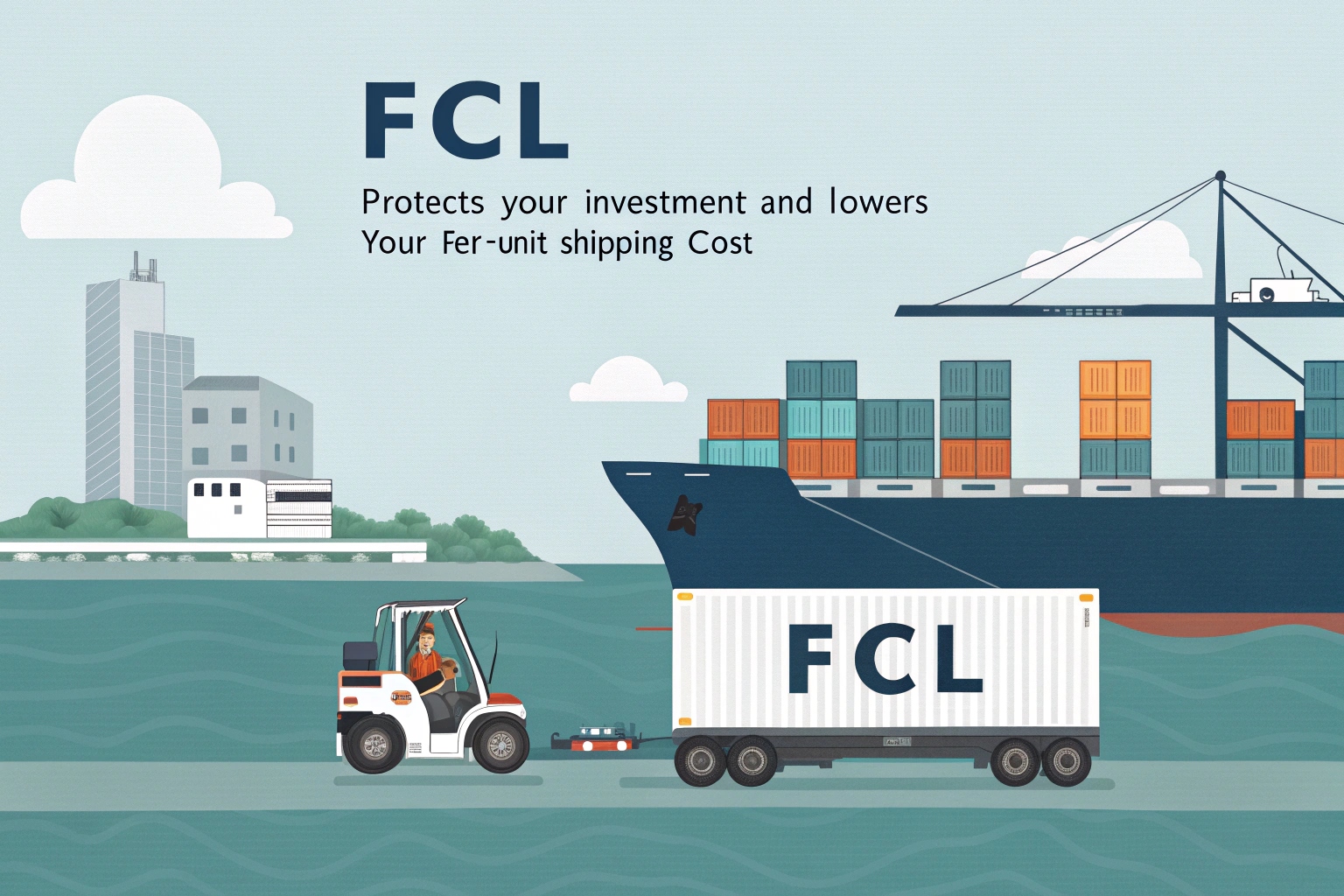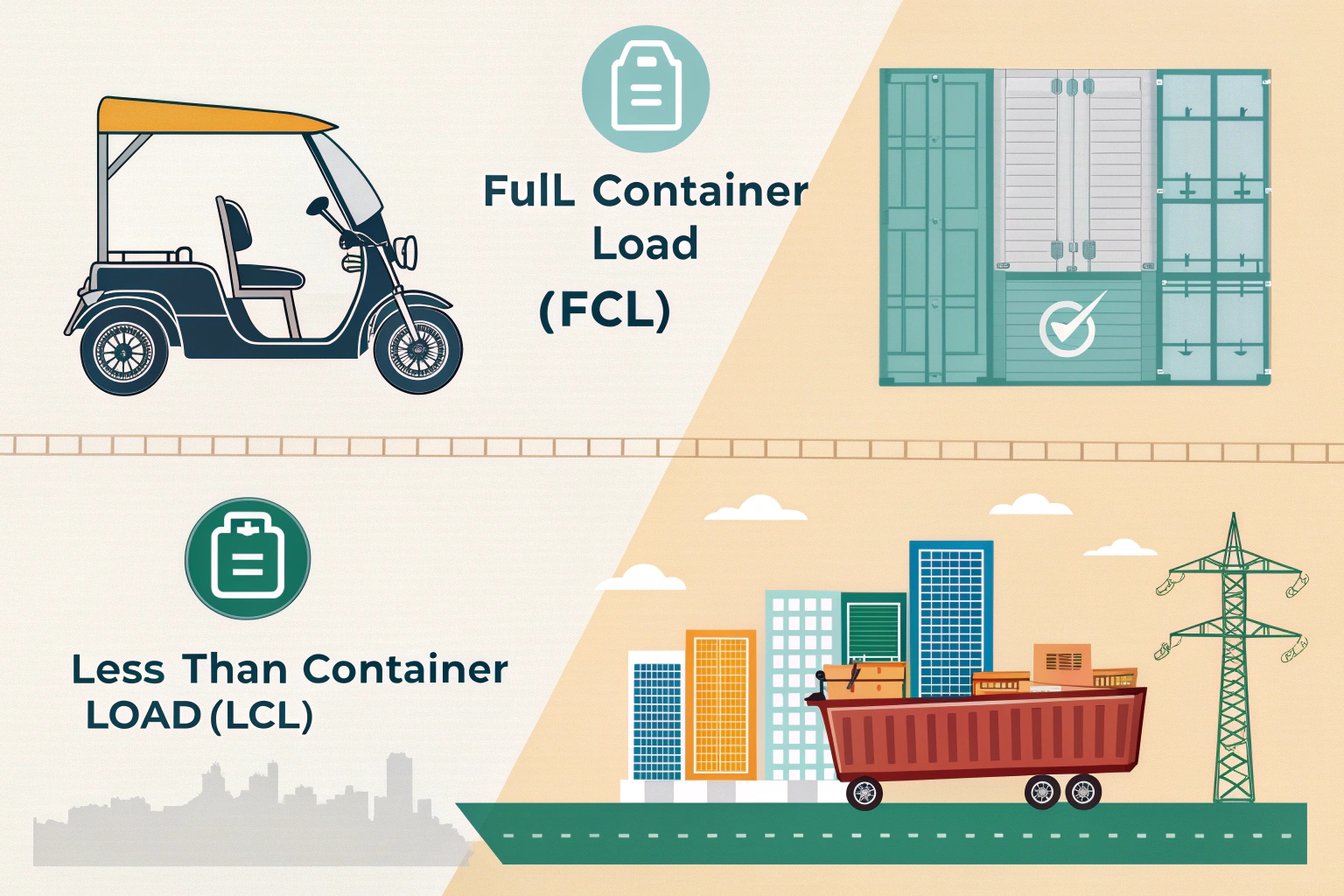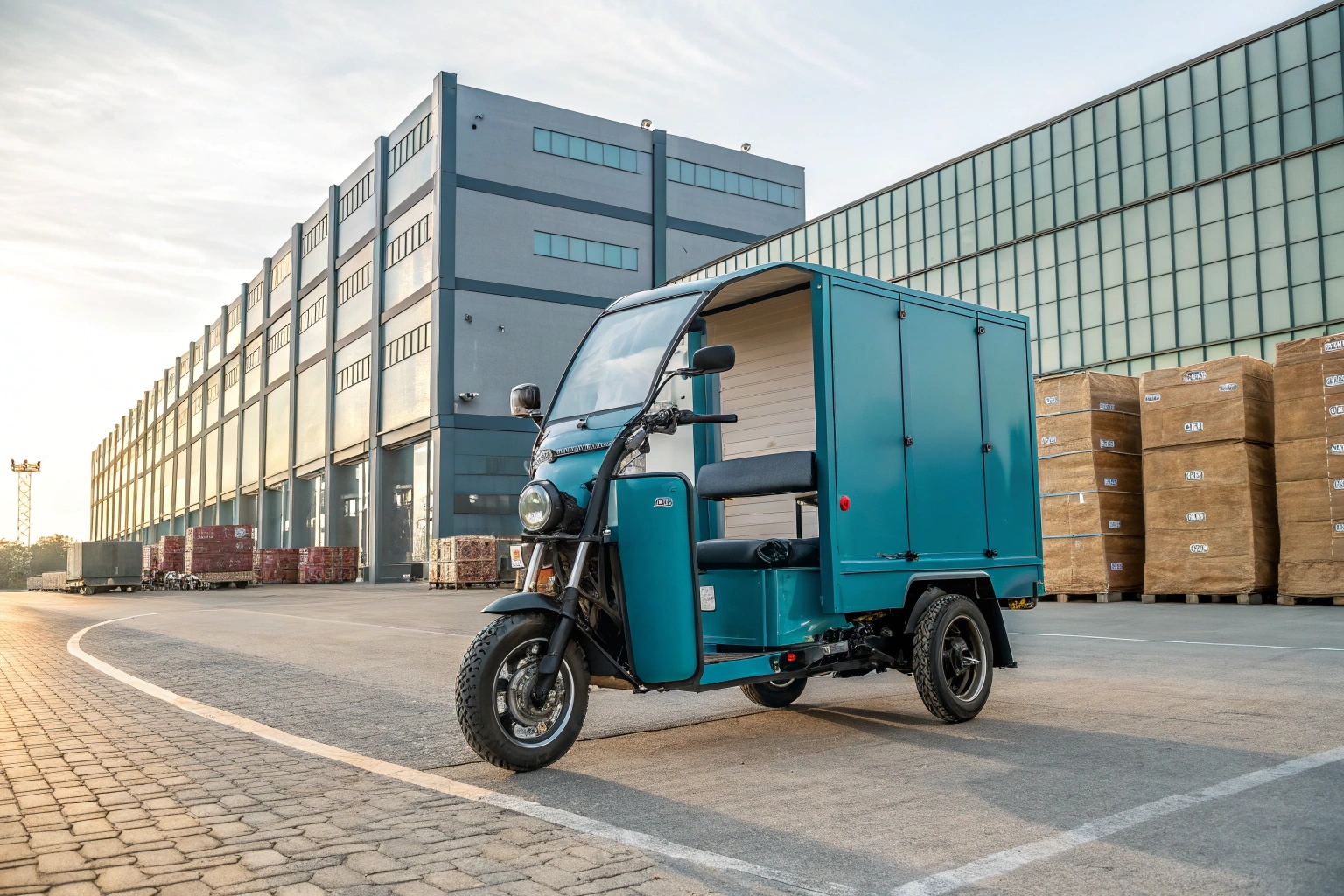Debating between LCL and FCL for your tricycle order? Worried that choosing the wrong one will lead to damaged goods, delays, or surprise costs? Let's clarify the best choice.
For electric tricycle shipments, FCL (Full Container Load) is nearly always the best choice. It allows for safe, cost-effective SKD/CKD packing, which is impractical and risky with LCL. FCL protects your investment and significantly lowers your per-unit shipping cost.

You might read online that LCL is cheaper for small volumes. For standard boxed goods, that can be true. But for electric tricycles, it's a completely different story. From my factory floor, I can tell you that the way we pack your order to save you money on ocean freight makes FCL the only logical option. Let's break down why this is the case for professional importers.
What is the Difference Between LCL and FCL in Shipping?
Do the terms LCL and FCL cause confusion? Misunderstanding them can lead to you making a costly mistake on your very first order, so let’s get it right.
LCL (Less than Container Load) means your goods share container space with other importers' cargo. FCL (Full Container Load) means you have exclusive use of an entire container for your shipment.

Think of it like this: FCL is a private taxi, and LCL is a shared bus. With FCL, the container is sealed at my factory and opened at your destination. With LCL, your goods are sent to a warehouse, loaded with other cargo, shipped, and then separated again at another warehouse.
Now, here’s the crucial point for elektrikli üç tekerlekli bisikletler. We ship them as SKD (Semi Knocked Down) or CKD (Completely Knocked Down) to maximize the number of units in a container. This means we are loading frames, wheels, and parts—not finished, boxed products. These are loose, often irregularly shaped metal parts that we stack carefully at our factory. This packing method is perfect for FCL, but creates huge problems for LCL, which expects neatly palletized cargo.
| Özellik | LCL (Less than Container Load) | FCL (tam konteyner yükü) |
|---|---|---|
| Container Use | Shared with other shippers | Exclusive to one shipper (you) |
| Cargo Type | Best for boxed, palletized goods. | Ideal for any cargo, including loose parts. |
| Handling | Handled multiple times at warehouses. | Sealed at factory, opened by you. |
| En iyisi | Small, standard-shaped shipments. | Bulk orders, sensitive, or irregular cargo. |
Which is More Cost-Effective for Bulk Electric Tricycle Orders: LCL or FCL?
Are you trying to find the absolute cheapest way to ship your tricycles? Afraid that hidden LCL fees will destroy your profit margin? Let's compare the real-world costs.
FCL is overwhelmingly more cost-effective for electric tricycle orders. The space saved by shipping parts (SKD/CKD) in a dedicated FCL container makes the per-unit cost dramatically lower than shipping an assembled unit via LCL.

The cost-effectiveness of FCL comes down to one thing: packing density. My team can expertly load a 20GP container with 15-25 tricycles using the SKD method. If we had to ship them fully assembled (CBU - Completely Built Up) to make them suitable for LCL, we could maybe fit 4-5 units in that same space. The per-unit cost difference is huge.
The Problem with LCL Pricing
LCL is priced per cubic meter (CBM). A single assembled tricycle on a pallet might take up 2-3 CBM. For 2 or 3 units, your total CBM might be close to half the volume of a 20GP container. At that point, the LCL freight cost is often almost the same as paying for a whole FCL container, but with much higher risk and hassle. FCL gives you a flat rate for the entire container, rewarding you for filling it efficiently.
FCL is the Clear Winner
Here's a simple comparison:
- FCL with SKD: Low cost per unit, high number of units.
- LCL with CBU: Extremely high cost per unit, very few units.
For any serious business, the choice is clear. I always advise my clients to plan their orders around filling at least a 20GP container.
When Should Electric Tricycle Importers Choose LCL Over FCL?
So is there ever a time to use LCL? Maybe for a small trial order? You might be tempted, but let me share my experience and warn you about the practical problems.
Frankly, for factory-direct electric tricycle shipments, LCL should be avoided. The risks of damage and logistical complexity are too high. It's only ever considered for a single, fully-assembled (CBU) unit, and even then, it's not ideal.

In theory, LCL is for small orders. In practice, for our products, it's a recipe for disaster.
The Logistical Nightmare
Remember, we ship loose SKD parts. I cannot send a pile of frames, axles, and small components to a consolidation warehouse. The warehouse workers are not my trained staff. They don't know how to handle these parts, how to stack them, or how to protect them. The parts would get lost or damaged. Sending our own staff to a public warehouse to pack an LCL shipment would be incredibly inefficient and expensive. We only pack inside our own factory, where we control the process.
The Risk of Damage
With LCL, your cargo is mixed with unknown items from other shippers. What if your tricycle frames are placed under heavy machinery parts? What if a box of liquids leaks onto your components? If your irregular-shaped parts damage someone else's fragile cargo, who is responsible? These are risks you don't need to take. In an FCL container, your goods are the only goods inside. It's safe and secure. The only time we'd even discuss LCL is for a single, fully-assembled and crated sample, but the cost is often prohibitive.
How Does Delivery Time Impact the Choice Between LCL and FCL?
Do you have a strict deadline for a government project or for your peak selling season? Worried about your shipment getting stuck in port? Your choice of shipping method directly impacts your schedule.
FCL is significantly faster and more predictable. Your container moves directly from the origin port to your destination. LCL shipments always face delays due to the extra handling steps at both ends.

An FCL shipment follows a simple path. We load and seal the container at our factory, and it goes to the port, onto the ship, and directly to your destination port.
An LCL shipment has many more steps. Your goods go from our factory to a warehouse. They wait for other cargo to arrive. They are loaded together. At the destination, the container goes to another warehouse to be "de-consolidated," or separated. This all adds time. You can expect an LCL shipment to take at least 5-7 days longer than an FCL shipment on the same route. In busy seasons, the delays can be even worse. For my clients in Africa or Southeast Asia who need their stock reliably, this unpredictability is a major problem. FCL provides a level of schedule control that LCL simply cannot match.
| Faktör | LCL Transit | FCL Transit |
|---|---|---|
| Handling | Multiple stops (consolidation/deconsolidation) | Direct point-to-point |
| Delays | High risk of delays at warehouses & customs | Low risk of extra delays |
| Total Time | 5-10 days longer than FCL | The most direct sea route available |
Çözüm
For electric tricycle imports, FCL is the superior choice for cost, safety, and speed due to SKD/CKD packing. It’s the professional standard for any serious importer.

